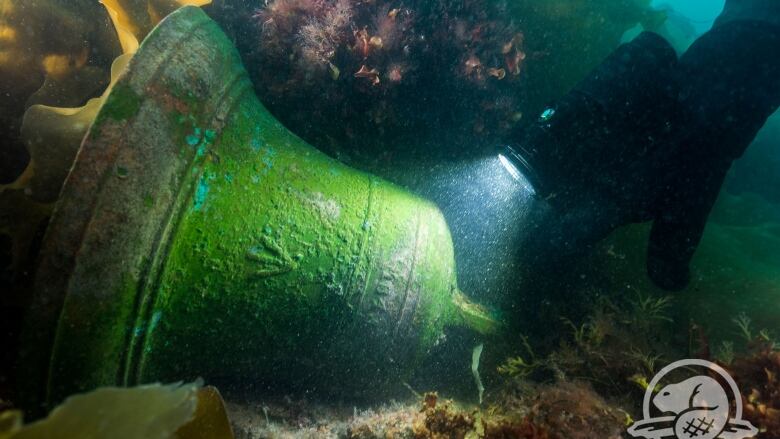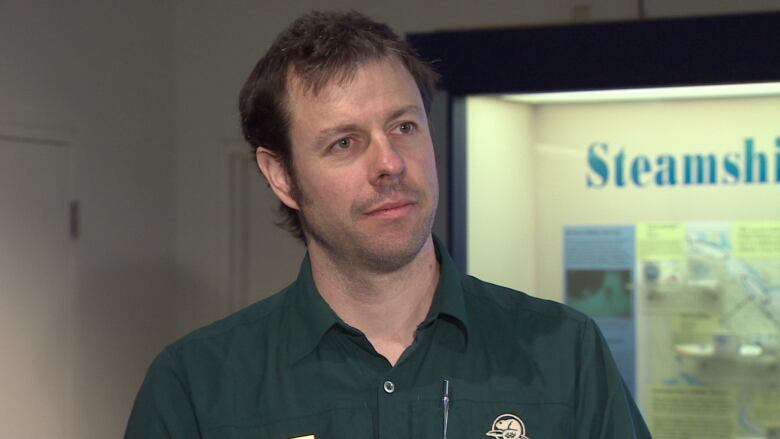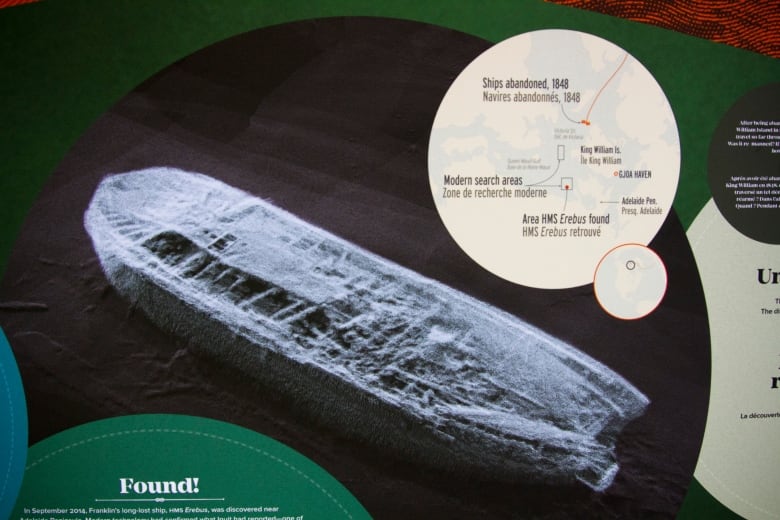Franklin expedition, exploration gets cross-Canada exhibit
History and stories of HMS Erebus to be displayed in museums across Canada

Imagine the Stanley Cup was only awarded onceover a century ago butwent missing soon after.Then imagine being the one that finds it deep in cold Arctic waters 170 years later.
That's how a colleague of underwater archeologist Thierry Boyer describedthe feeling offinding HMS Erebus, one of the long-lost ships of theFranklin expedition that set sail in 1845, only to become iceboundin Canada's Arctic.
"This was something big. We'd been searching for it for over six years," Boyertold reporters and students at the Maritime Museum of the Atlantic in Halifax Wednesday.
Boyer joined other Parks Canada staff andthe Royal Canadian Navy in launching anew cross-Canada exhibit featuringstories about HMS Erebus, found on the sea floor west of O'Reilly Island in Nunavut in 2014.
The Halifax museum is one of10 in Canada with "small, spiffy exhibits," according to director of the Nova Scotia Museum, Stephanie Smith.
"For the past 10 years, the institutions have been thinking about how do we want to represent this wonderful story. Both the historical side of the story and the contemporary story," she said.

'We're really excited'
Commander Peter Cook of the Royal Canadian Navy also presented. He was an instrumental planner in the navy's portion of the search for Franklin's ships. The navyprovided help with logistics, manpower andship co-ordination,and worked closely with Canadian Hydrographic Services.
"For the last four years, we've provided crew members to the Martin Bergmann [a former fishing trawler used in the project], as they've done the underwater searching that resulted in the discovery of Erebus," Cook said.
This cross-Canada project is a new take on the travelling exhibit. Instead of sending artifacts and display cases on a road trip, what's included in the small exhibits will be changed as new details arelearned and artifacts are restored.
"We're really excited about the outcome," Smith said.

What's being preserved
Following the presentations, Parks Canada hosted a video conference. Two Parks Canadaexperts stood infront of a screen showing video of what's going on behind the scenes at their lab.
They also showed off some of the artifacts in the process of being preserved, which include:
- Fragrance bottle
- Plates
- Wooden grip of aBritish Royal Navy and itscopper-alloy guard
- Section of the ship's wheel
- First object excavated from HMSErebus:the bell, on which the date 1845can still be seen
- Leg of a table
- A leather shoe
- Bronze cannonfeaturing aKing George III cypher, as well as three six-pound cannon balls
You can watch the full 40-minute presentation here.

With files from Brett Ruskin, Robert Short












_(720p).jpg)


 OFFICIAL HD MUSIC VIDEO.jpg)
.jpg)



























































































